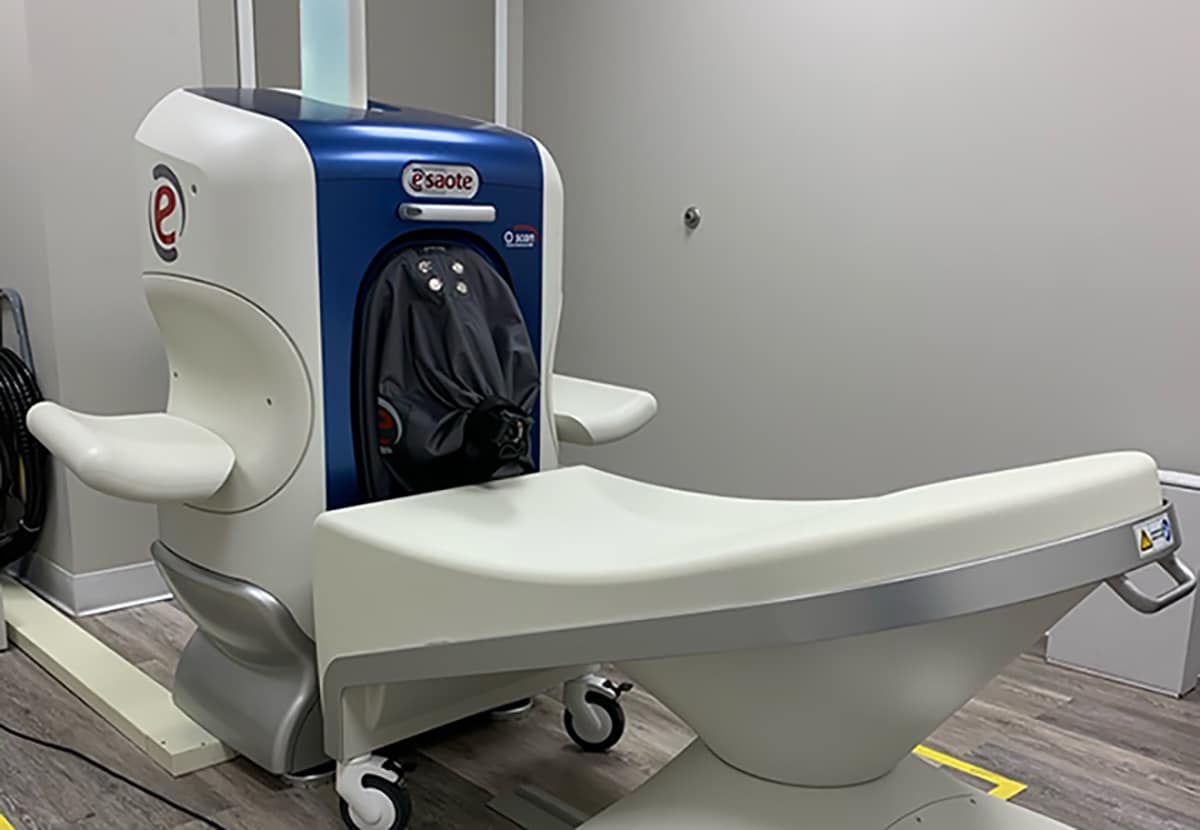Lower Extremity MRI
*** Available in our Joilet Office***
Recently a more compact MRI machine has made it possible for patients to get imaging of their foot and ankle without having to put their entire body into the MRI machine. The patient can simply sit next to the machine and place the affected extremity inside.
How Does Lower Extremity Foot and Ankle MRI Work?
Unlike the standard MRI machine which uses a large circular-shaped device, a lower extremity MRI is a smaller device designed for the body’s extremities.
Some of the benefits of an extremity MRI machine include:
- A more comfortable setting for younger patients without the need for any sedation. It also enables parents to stay with the children during an exam
- Quieter than the standard MRI machine
- Easier for patients with obesity, are elderly, or have claustrophobia
- Lessens unintended movement thus ensuring a better image
What Can Lower Extremity MRI Diagnose?
The lower extremity MRI for the foot and ankle is specifically designed to diagnose the following conditions:
- Arthritis: Swelling and tenderness in your joints. Its main symptoms include joint pain along with stiffness.
- Infection in the bone: Also known as osteomyelitis, which is generally treated with antibiotics, but can lead to an amputation.
- Stress fractures: A small crack in the bones that can be caused by repetitive motion or overuse. It is very common among runners.
- Tendon pathology: The most commonly affected tendon is the Achilles. It is located near the back of your heel and connects the calf muscles to your heel.
- Ankle Sprains: This occurs when your ankle ligaments are stretched or even torn. Without proper treatment, a sprain will weaken your ankle making it likely to injure it again.
- Nerve pain: Most commonly a neuroma, which is a pinched nerve most commonly found between your third and fourth toes. Patients affected by this will often complain about burning or tingling pain.
- Plantar fasciitis: This is caused by inflammation to the fibrous tissue that originates in your heel and inserts in your toes. The patients will generally complain of pain on the first step in the morning or pain after rest.
- Bone Tumors: There are many different types of bone tumors ranging from benign to malignant or cancerous. Symptoms can be as mild as dull pain near the tumor.
In some rare instances, it may not be safe for the patient to have an MRI scan. These conditions include if the patient has a cardiac pacemaker, artificial heart valves, electronic stimulators, or external ear implants.
The traditional full-body MRI can cost up to $3,500 limiting patients who need the imaging to get a full and proper diagnosis. At Advanced Foot and Ankle Centers of Illinois, we have made this expensive imaging a lot more affordable. This ensures anyone who will benefit from an MRI to fully heal their pain can have one at an affordable cost.


![vCertificate_MRI_[Advanced Foot and Ankle of Joliet_Esaote - O-Scan Lite Serial - 8524]](https://yourfootdocs.com/wp-content/uploads/2023/10/vCertificate_MRI_Advanced-Foot-and-Ankle-of-Joliet_Esaote-O-Scan-Lite-Serial-8524.jpg)